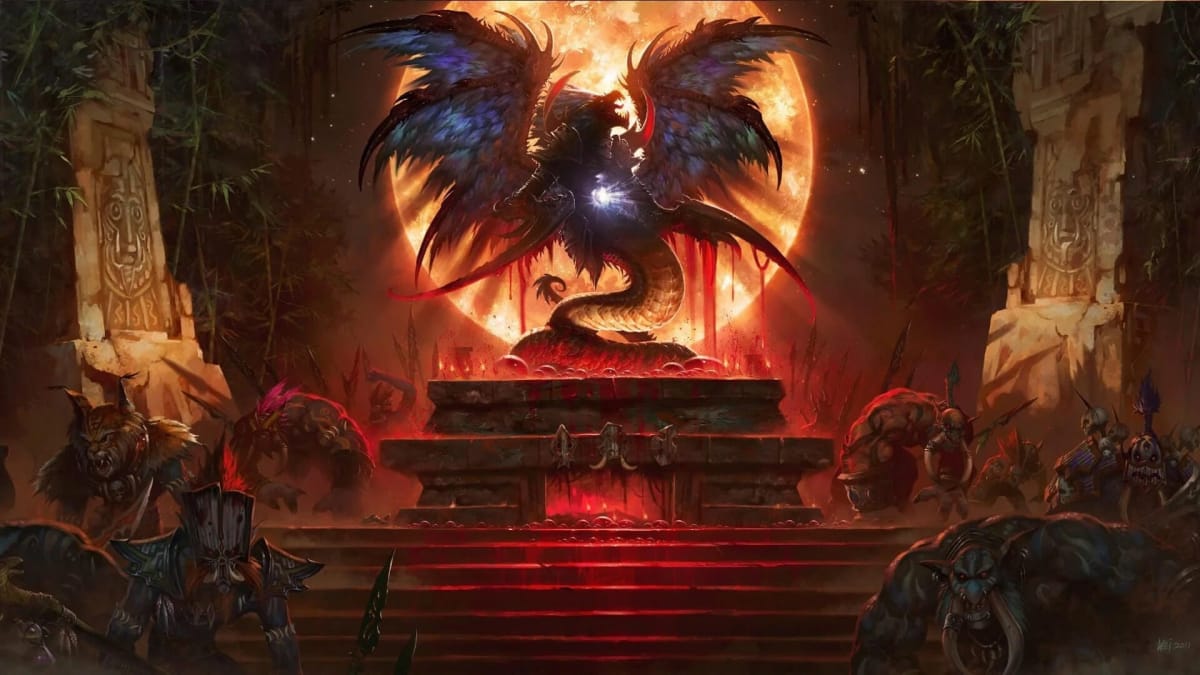As COVID-19 continues to impact people around the world, it is important to know how these diseases spread. Like many sciences, models can be used to illustrate a point or predict an outcome. Epidemiologists and virologists can turn to a rather unusual example when studying infectious disease: Blizzard’s World of Warcraft.
On Sept. 13, 2005, a bug emerged onto the World of Warcraft servers. A new raid, Zul’Gurub, was recently added, with all the pomp and circumstance that entailed. When fighting Hakkar the Soulflayer, the final boss, players were infected with a significant debuff called Corrupted Blood. This disease was intended to only last a few seconds. It wasn’t supposed to leave the raid, since players would wipe, clear the debuff, and respawn or quit. Due to an oversight, however, players could take the debuff out of the raid and into the larger game world. Pets and minions, such as those used by Warlocks or Hunters, could take Corrupted Blood and act as carriers when dismissed and then summoned again.
Normally, this would not be an issue. Under normal circumstances, it would be the equivalent of having a rare pet that was brought about as a gameplay quirk, a status symbol. Of course, Corrupted Blood had the ability to spread from one player to another by proximity. Low-level characters died in a matter of seconds just from standing near another infected person. NPCs could contract the condition but were unharmed by it, making them an excellent example of asymptomatic carriers. Asymptomatic carriers are people with a contagious disease circulating in their system but not exhibiting any signs of illness.

Obviously, this posed a major problem for the servers. Players could log in, become infected by nearby players or NPCs, and die. This resulted in broken equipment and, of course, an outcry of angry players. At the time, Blizzard reported over four million players, an ample sample size for the study of human behavior during pandemics.
Eric Lofgren, an epidemiology student at Tufts University at the time, described the initial situation as one of confusion before panic set in.
"It is extremely hard mathematically to model risk aversion, or panic, or altruistic behavior, or noncompliance with quarantines,” he noted in an October 2007 interview. Blizzard initially considered it a bug, rather than a potential learning tool, and did not collect data on how Corrupted Blood spread.
However, Lofgren and his adviser, Nina Fefferman, joined a coalition of scientists studying the Corrupted Blood incident as a potential model to predict behavior in future outbreaks.
"The models we have are incredibly good at figuring out what the disease will do once we know what the behavior of the person is,” noted Fefferman. But the unpredictability of human nature makes it difficult to produce accurate models. "We're pretty bad at knowing what those assumptions [of behavior] should be."
Fefferman was more interested in the various reactions to the Corrupted Blood incident. Some players simply logged out in haste hoping to avoid the plague, mirroring the current phenomenon of isolation and social distancing. She also professed interest in the way players would engage in rubbernecking and going to disease epicenters. Though death is far less permanent in World of Warcraft, it is not unlikely that people, consumed by curiosity, flock to the scene of an outbreak. This is a process not unlike disaster tourism, where people visit sites of both natural and man-made disasters. Some Typhoid Marys went so far as to deliberately contract and spread the debuff, hoping to cause chaos and destruction. More benevolent players healed others, and others simply warned passersby that the area was unsafe.
Of course, the Corrupted Blood pandemic is not a completely accurate simulation. The loss of life for a video game character is much different from the death of a living, breathing person. Players could simply respawn and return as many times as they wished to a zone. The cost of a real pandemic is much higher, but World of Warcraft’s Corrupted Blood incident continues to be a case study into human behavior. While Fefferman expressed interest in modeling more outbreaks, MMO companies have yet to take her up on the offer.
As the COVID-19 pandemic continues to spread, please check back frequently with us here at TechRaptor for the latest in industry closings, announcements, and delays. Are there other games that you feel model a pandemic feel? What are you playing during quarantine? We’ve already covered some great quarantine games, but let us know in the comments below or on our social media pages! In the meantime, we’ll skip the couch co-op for a little while. Zul’Gurub is slated to release sometime next month in World of Warcraft Classic, if you were wondering.
Have a tip, or want to point out something we missed? Leave a Comment or e-mail us at tips@techraptor.net













